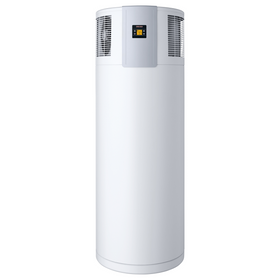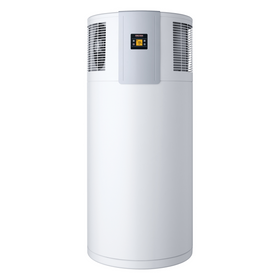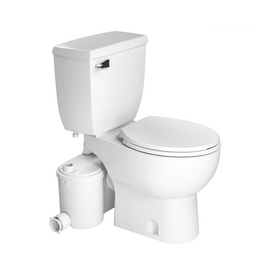
EchoHaven: A Net-Zero Community In Calgary
Last Updated: Apr 13, 2025In any climate, building an all-electric, net-zero energy home powered entirely by solar panels requires a dedicated homeowner, along with a team of qualified sustainable-building experts. Constructing such a home in a Canadian climate, where during winter nights the temperature may dip down into the -20s drives a narrative that results in a completely different story.
In northwest Calgary, five like-minded families have created an eco-neighborhood called EchoHaven. Located in the Rocky Ridge area, EchoHaven is a small neighborhood of 25 homes with a focus on sustainable building and caring for nearby natural areas. The neighborhood focuses on quality of life, minimal environmental footprint, healthy and extremely energy-efficient homes, solar-heating strategies, and water conservation initiatives.
At EchoHaven, all homes built to achieve a minimum EnerGuide 84 efficiency rating. The EnerGuide Rating System is a program managed by the Canadian government in order to give homeowners more information about the energy performance of their homes. In effect, the homes in EchoHaven see a 50 percent reduction of reliance on grid power compared to other homes in the area. Some EchoHaven homes are designed to achieve zero greenhouse gas emissions.
The families who live in EchoHaven, besides enjoying energy-efficient homes with low carbon footprints, also co-own ecologically pristine public areas. They work together around common environmental goals.
Dave Spencer and Debbie Wiltshire were among the five original families who started the process of imagining EchoHaven. Today, they proudly own and live in a 2,750-square-foot, net-zero home that has received net-zero energy use certification.
Modeling Thermal Performance in a Cold Climate
From the outside, Spencer and Wilshire’s home has a modern feel with a bright, bold color palette. Designed by Kim Walton, founder of Bow Crow Design, the design and building goals of the house were to maximize the benefits of the south-facing site, reduce the owners’ ecological footprint, and use locally-sourced, durable, and healthy materials with recycled content. The house’s grid-tied 5.2 kilowatts (kW) photovoltaic (PV) system provides the home’s energy. Fastened to the metal roof, the solar panel system complements the home’s geometric exterior design.
Table of Contents
- Energy Efficiency and Lessons Learned
- A Sustainable Community Model

Walton sited the house toward the south, for good reason. The large, south-facing, energy-efficient windows have a high SHGC rating that allows solar heat to warm the home, thus reducing the need for mechanical heating. The windows bring in abundant natural light, as well, reducing the need for lighting that requires electricity (except at night, of course). The windows, in combination with a completely sealed and well-insulated building envelope, have made the home’s passive solar heating strategy possible.

The home utilizes radiant electric-heat panels developed by Thermaray. The panels are hidden behind thick drywall ceilings, allowing the drywall to capture more of the released heat. Thick drywall (5/8”) and concrete floors act as thermal mass that helps absorb and retain heat gain from the passive solar heating as well. As temperatures drop at night, the heat from the sun that was captured during the day is released into the home. Two solar thermal panels integrated into the exterior finishes supply to part of the household’s solar thermal/on-demand hot water heating.

The walls achieve an impressive R59 insulation rating—significantly higher than building code. This is achieved through three-and-a-half inches of two-pound polyurethane insulation, along with eight inches of dense-pack cellulose insulation fiber at the interior, which protects the home from frigid Calgary winters. The roof achieves a whopping R108 insulation rating. The floor is R70. The home’s passive house design, with a focus on extreme airtightness, shields the couple from the outside elements.
Energy Efficiency and Lessons Learned
The couple has carefully documented and monitored their home’s performance since occupying it in June 2012. Home monitoring is an eligibility requirement for certification through the International Living Future Institute. To reduce their overall home electricity demand, the couple incorporated several other energy-efficiency measures.
LED lights, in combination with natural light, reduce energy demand while keeping the interior bright and lively at night. The home’s interior is light-filled, comfortable, and quiet.
A condensing, vent-less clothes dryer minimizes heat loss through the building envelope. Condensing clothes dryers help eliminate an envelope penetration for exhaust. Captured condensate can also be cleaned and used for use, such as watering plants.”
Smart ventilation, including the use of a Heat Recovery Ventilator (HRV), was required to protect the airtight house’s interior air quality. This ventilation strategy also eliminates the need for air conditioning, which reduces the home’s summer energy demand. The home also has a unique “kill switch” located in the garage. This switch essentially allows the home to be turned “off” and can drastically reduce the “ghost load” or phantom power that contributes to energy use.
Tobias Roberts
Tobias runs an agroecology farm and a natural building collective in the mountains of El Salvador. He specializes in earthen construction methods and uses permaculture design methods to integrate structures into the sustainability of the landscape.












